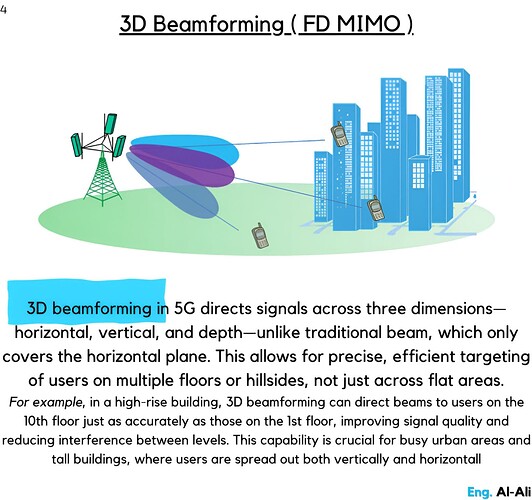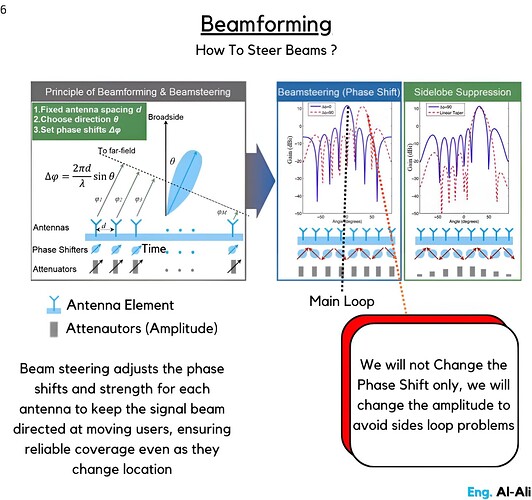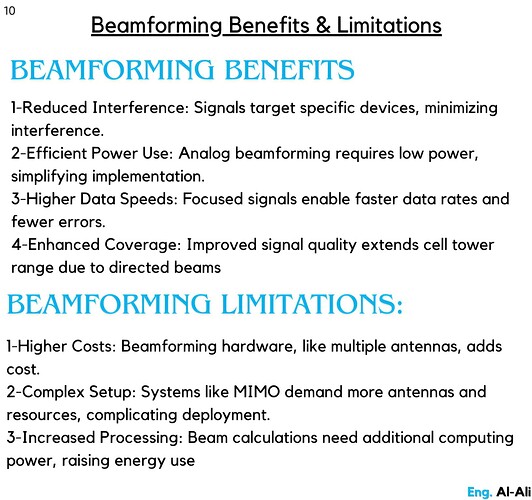Creating a Focused Beam
To achieve narrow, powerful beams, engineers rely on two main techniques:
- Antenna: Deploying many small antennas in an array allows them to work together, creating a more focused, direct signal path.
- Phase Shifting: Adjusting the timing (phase) of the signals from each antenna allows the beam direction to be precisely determined and prevents any interference with other users.
Steering the Beam for Moving Users!
When users move, we need to keep the beam aimed at them. This is done by changing the signal timing (called phase shifts) and adjusting strength for each antenna. This keeps the beam narrow and accurately pointed, even if the user moves around.
Three Types of Beamforming:
Beamforming uses various methods, each suited to specific use cases, and the primary choice for 5G is hybrid beamforming.
-
Analog Beamforming:
Analog beamforming uses one RF chain to create a single, strong beam of signals. This RF chain includes the transmitter/receiver (TRX), DAC,PA, which are all essential for transmitting signals effectively. This method is great for short distances but can only focus on one user or area at a time. -
Digital Beamforming:
on the other hand, gives each antenna its own RF chain. This allows the system to create multiple beams at the same time, serving many users simultaneously. This flexibility makes it excellent for dense environments, but it comes with higher power consumption and costs due to the need for more hardware -
Hybrid Beamforming:
combines the strengths of both analog and digital beamforming. It uses a mix of analog techniques for directing signals but also incorporates digital processing, allowing for multiple beams to be formed with fewer RF chains than a fully digital system. This makes it efficient and well-suited for high-density areas, like urban environments, where many users need coverage
Why Beamforming and Massive MIMO Matter?
By focusing signals directly at each user, massive MIMO with beamforming allows 5G networks to connect more people with faster speeds. When combined with spatial multiplexing (reusing the same frequencies for different users), 5G achieves much higher data capacity. With high-frequency waves (like mmWave), 5G can handle even more data in busy areas, bringing faster speeds and smoother connections
Beamforming
Beamforming
Beamforming Gain
3D Beamforming (FD MIMO)
Beamforming & MIMO Trade-Offs
Beamforming - How to Steer Beams?
Beamforming Type - Analog
Beamforming Type - Digital
Beamforming Type - Hybrid
Beamforming - Benefits and Limitations
That’s it ![]()
LinkedIn: ![]()









